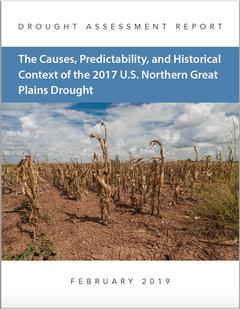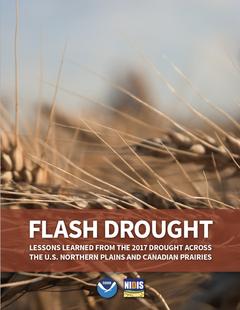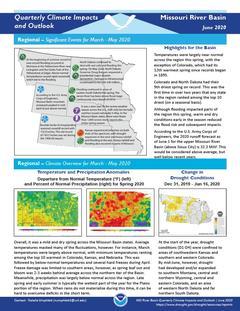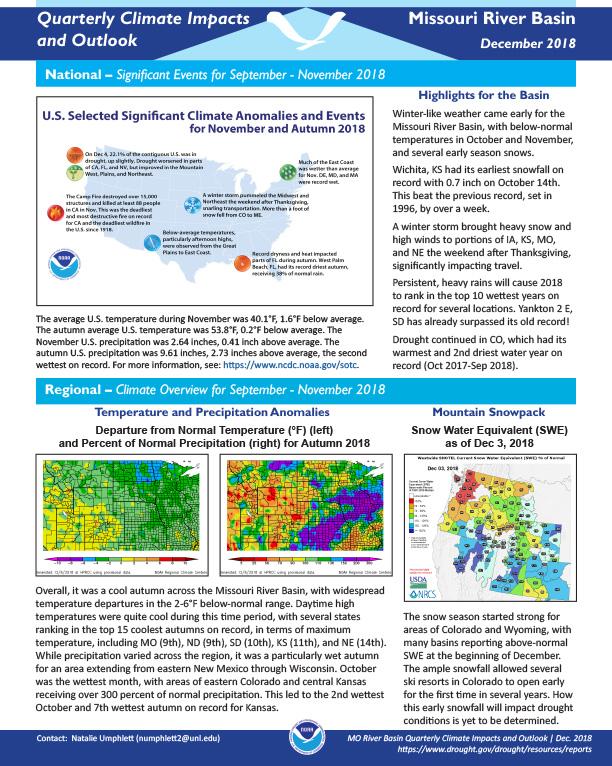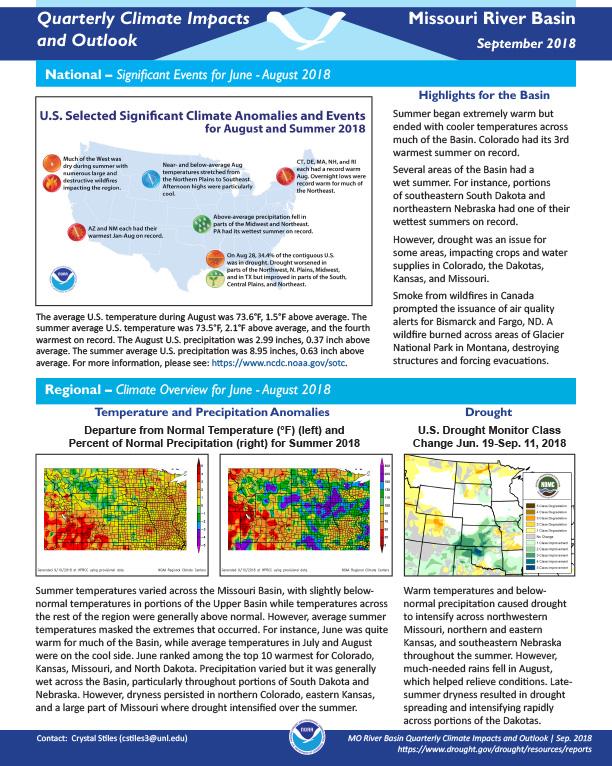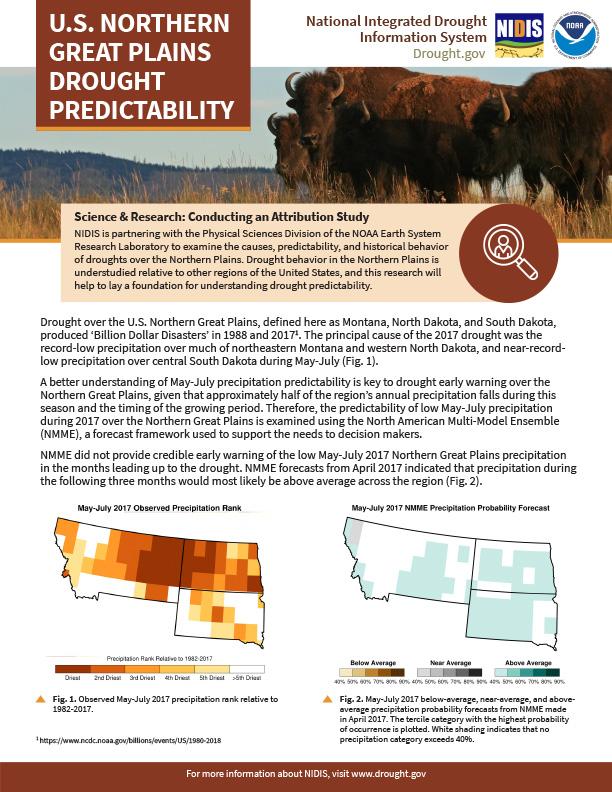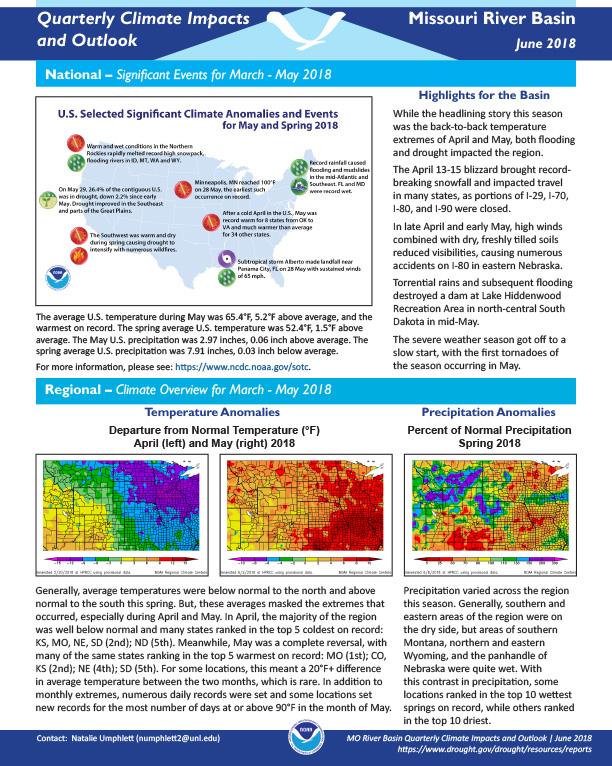For the latest forecasts and critical weather information, visit weather.gov.
This assessment is a National Oceanic and Atmospheric Administration (NOAA) response to a request by the National Integrated Drought Information System (NIDIS) for an evaluation of the causes, predictability, and historical context of the 2017 United States Northern Great Plains drought. This assessment was led by a team of weather and climate experts from NOAA’s Earth System Research Laboratory’s Physical Sciences Division and its Cooperative Institute located at the University of Colorado Boulder.
The 2017 drought was a rapid-onset event for northeast Montana, the Dakotas, and the Canadian Prairies during the spring and summer of 2017. It was the worst drought to impact the U.S. Northern Plains in decades and it decimated crops across the region, resulting in $2.6 billion in agricultural losses in the U.S. alone, not including additional losses in Canada. The unique circumstances of this drought created an opportunity to evaluate and improve the efficacy of drought-related coordination, communication, and management within the region in preparation for future droughts.
Quarterly Climate Impacts and Outlook for the Missouri River Basin March – May 2020. Dated June 2020.
Temperatures were largely near normal across the region this spring, with the exception of Colorado, which had its 12th warmest spring since records began in 1895. Although flooding impacted parts of the region this spring, warm and dry conditions early in the season reduced the flood risk and subsequent impacts.
Quarterly Climate Impacts and Outlook for the Missouri River Basin September – November 2018. Dated December 2018.
Overall, it was a cool autumn across the Missouri River Basin, with widespread temperature departures in the 2-6°F below-normal range. While precipitation varied across the region, it was a particularly wet autumn for an area extending from eastern New Mexico through Wisconsin.
Provides a definition of El Nino; the outlook for winter temperatures and precipitation; potential winter and spring impacts; and a look back at previous El Nino winters.
NOAA’s Regional Climate Services Program created these Outlooks to inform the public about climate impacts within their respective regions. Each regional report contains easy-to-understand language, and anyone can access them through the Drought Portal at https://www.drought.gov/drought/resources/reports.
Quarterly Climate Impacts and Outlook for the Missouri River Basin June – August 2018. Dated September 2018.
Summer began extremely warm but ended with cooler temperatures across much of the Basin. Colorado had its 3rd warmest summer on record. Several areas of the Basin had a wet summer. For instance, portions of southeastern South Dakota and northeastern Nebraska had one of their wettest summers on record. However, drought was an issue for some areas, impacting crops and water supplies in Colorado, the Dakotas, Kansas, and Missouri.
Drought over the U.S. Northern Great Plains, defined here as Montana, North Dakota, and South Dakota, produced ‘Billion Dollar Disasters’ in 1988 and 2017. The principal cause of the 2017 drought was the record-low precipitation over much of northeastern Montana and western North Dakota, and near-record-low precipitation over central South Dakota during May-July.
Quarterly Climate Impacts and Outlook for the Missouri River Basin March – May 2018. Dated June 2018.
While the headlining story this season was the back-to-back temperature extremes of April and May, both flooding and drought impacted the region.


